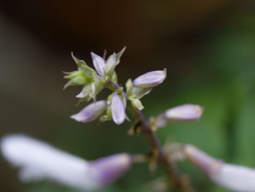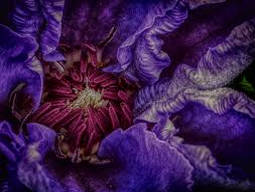A Comprehensive Guide To Making Salvia Tincture: Benefits, Risks, And Step-by-Step Instructions
Salvia is usually ingested through smoking, chewing the leaves, or making tea from the leaves. However, another popular way of ingesting Salvia is through a tincture. A tincture is an extract of a plant or herb that is mixed with alcohol or another solvent. In this case, Salvia leaves are soaked in alcohol to create a potent liquid extract. Here are some benefits of using Salvia tincture compared to other forms of ingestion:
Benefits of Salvia Tincture: Tincture Vs. Smoking
Tinctures are liquid extracts made from medicinal plants or herbs that are used to extract the active compounds present in the plant material. The extraction process involves soaking the plant material in a high-proof alcohol solution, which extracts the desired compounds, resulting in a concentrated liquid extract which has many benefits, including:
- Increased self-awareness and introspection - Some people report feeling more in touch with their thoughts and emotions after using the extract. This can be helpful for personal growth, therapy or spiritual exploration.
- Anxiolytic effects - Salvia divinorum tincture may help reduce anxiety levels by acting on specific receptors in the brain.
- Potential use as a tool in psychotherapy - Some people report that salvia can facilitate introspection, self-awareness and spiritual exploration during therapy sessions.
- It is a natural plant that grows wild throughout Mexico and Central America. It has been used for centuries by indigenous people there for spiritual purposes
- The active ingredient in salvia (salvinorin A) was first isolated from this plant in 1993 but its effects on consciousness were known about long before then. Salvinorin A acts upon the brain’s serotonin receptors which control mood and perception of time passing. This means it can be very powerful when ingested or smoked because these two methods bypass the liver’s detoxification process
- In addition to being an effective psychedelic drug with no bad side affects like many other drugs do, users report feeling more connected to their surroundings while under the influence of salvia than they normally would feel during normal waking hours
- Because you have little control over your thoughts and emotions once taking salvia, most find themselves having profound epiphanies regarding life choices such as career paths, relationships etc… These revelations often lead them down new roads entirely different from those they had previously planned out for themselves prior to taking salvia
Salvia tincture offers unique benefits compared to other herbal tinctures due to the presence of Salvinorin A, the active compound responsible for its psychoactive effects. Salvia tincture can induce powerful visionary experiences, altered states of consciousness, and profound spiritual insights. The tincture can be used for therapeutic purposes, such as treating depression, anxiety, and addiction. Salvia tincture is also a popular recreational substance that can induce intense, mind-altering experiences.
Before I discuss how to make a tincture, consider the benefits of tincture vs smoking. Tinctures offer several benefits over other forms of ingestion, such as smoking or consuming the plant material directly. Tinctures allow for more precise dosing, making it easier to measure out the appropriate amount for desired effects. Additionally, tinctures provide a longer-lasting effect compared to smoking or consuming the plant material directly, making it easier to maintain the desired state of mind. Tinctures are also more convenient to use, as they can be added to food or drinks and are easier to transport.
-
Precise Dosage One of the biggest advantages of using Salvia tincture is that it allows for more precise dosing. When smoking or chewing Salvia, it can be difficult to gauge the amount of the active ingredient, Salvinorin A, that you are ingesting. This can lead to unpredictable and potentially dangerous effects. With a tincture, you can measure out a specific amount of liquid to ensure that you are taking a controlled dose.
-
Longer Lasting Effects When Salvia is smoked or chewed, the effects are typically short-lived, lasting only a few minutes to an hour. However, when taken in tincture form, the effects can last up to several hours. This can be beneficial for those who are seeking a longer and more sustained experience.
-
Safer Inhalation Smoking Salvia can be harsh on the lungs, particularly for those who have pre-existing respiratory issues. Ingesting a tincture eliminates the need for inhaling smoke or vapor, making it a safer and more comfortable option.
-
Convenient and Discreet Salvia tincture is a convenient and discreet way of ingesting the plant. It can be easily added to a drink or taken directly under the tongue. This can be particularly beneficial for those who wish to use Salvia in a social setting or for medicinal purposes.
-
Reduced Nausea One of the side effects of chewing or smoking Salvia is nausea. This can be unpleasant and may deter some individuals from using the plant. Salvia tincture, however, has been reported to cause less nausea than other forms of ingestion.
Risks and Precautions
Making Salvia extract can be a risky process if proper precautions are not taken. Here are some of the potential risks associated with making Salvia extract and the precautions you should take:
- Physical Hazards: The process of making Salvia extract involves the use of high-proof alcohol and heat, which can be hazardous. Therefore, it’s important to handle the alcohol with care and avoid any sparks or open flames.
- Toxicity: Salvia leaves contain psychoactive compounds that can be toxic in high doses. Therefore, it’s important to use the correct ratio of Salvia to alcohol and start with small doses to avoid any unwanted effects.
- Legal Risks: Salvia is a controlled substance in many countries, and making Salvia extract may be illegal. It’s essential to research the legal status of Salvia in your area before attempting to make the extract.
- Personal Safety: Salvia can have potent psychoactive effects that can impair judgment and motor skills. Therefore, it’s important to take precautions when using Salvia extract, such as avoiding driving or operating heavy machinery.
To mitigate these risks, it’s important to take proper precautions when making Salvia extract. Use safety equipment such as gloves and safety glasses to protect yourself while handling the alcohol. Work in a well-ventilated area to avoid inhaling any fumes. Always follow the recommended ratio of Salvia to alcohol and start with a small dose to avoid any unwanted effects.
Potential risks associated with Salvia tincture use:
Salvia tincture is a potent psychoactive substance that can induce powerful and unpredictable effects. Some potential risks associated with Salvia tincture use include disorientation, confusion, loss of motor control, and hallucinations. In some cases, users may experience intense fear or paranoia. Salvia tincture can also cause physical side effects such as nausea, dizziness, and headache.
Precautions to take before making and using the tincture:
Before making and using Salvia tincture, it’s essential to take necessary precautions to ensure a safe and controlled experience. Firstly, it’s recommended to purchase Salvia from a reputable supplier to ensure the purity and quality of the plant material. Secondly, it’s crucial to measure the tincture accurately to avoid over-dosage. Starting with a low dose and increasing gradually is recommended. Finally, Salvia tincture should be used in a safe and controlled environment with a sober sitter present to assist in case of an emergency.
Making the Salvia Tincture
Materials Needed
To make Salvia tincture, you will need the following materials:
- Dry Salvia Divinorum Leaves: You can purchase these from an online or local supplier. Ensure that the leaves are of high quality and free of any contaminants.
- High-proof Alcohol: The recommended alcohol for making tinctures is high-proof grain alcohol, such as Everclear, which has a high alcohol content of around 95%. You can also use vodka or rum, but they have a lower alcohol content, and the extraction process may take longer.
- Glass Jars: You will need two glass jars, one for macerating the Salvia leaves and alcohol mixture and another for the final tincture.
- Cheesecloth or Strainer: You will need a cheesecloth or strainer to separate the Salvia leaves from the alcohol mixture.
- Dropper Bottles: You will need dropper bottles to store the final tincture.
- Labels: It’s essential to label the dropper bottles with the name of the tincture and the date of creation.
- Funnel: You will need a funnel to transfer the tincture from the glass jar to the dropper bottles.
- Scale: You will need a scale to measure the Salvia leaves accurately.
- Gloves: Wear gloves when handling Salvia leaves, as some people may experience skin irritation.
- Eye protection: Wear eye protection when handling high-proof alcohol to prevent eye irritation or injury.
- Measuring cup: You will need a measuring cup to measure the high-proof alcohol accurately.
- Spoon: You will need a spoon to mix the Salvia leaves and high-proof alcohol mixture.
Ensure that all materials are clean and sterilized before use to avoid contamination.
Step By Step Process
- Prepare the Salvia leaves: Break the Salvia leaves into small pieces and grind them into a powder using a coffee grinder or mortar and pestle. Ensure that the leaves are dry, as moisture can cause mold and bacterial growth during the tincture-making process.
- Measure the alcohol: Calculate the amount of alcohol needed based on the amount of Salvia leaves. A general rule of thumb is to use 1 ounce of Salvia leaves per 8 ounces of alcohol. For example, for a batch of 28 grams of Salvia leaves, use 16 ounces of alcohol.
- Combine the Salvia and alcohol: Add the powdered Salvia leaves to a glass jar with a tight-fitting lid. Pour the alcohol over the leaves until they are completely covered. Close the jar tightly and shake well to ensure that the leaves are fully submerged.
- Infuse the mixture: Store the jar in a cool, dark place for at least two weeks, shaking the jar daily. The longer the mixture infuses, the stronger the tincture will be.
- Strain the tincture: After two weeks, strain the mixture through a fine mesh strainer lined with cheesecloth to remove all plant material. Use a funnel to transfer the tincture into amber glass dropper bottles. Store in a cool, dark place.
- Dosage and consumption: To use the tincture, place the desired amount of drops (usually between 10-20 drops) under your tongue or add it to a drink. Start with a low dose and increase gradually as needed, as Salvia tincture can be very potent.
Tips And Tricks For Ensuring A Successful Outcome
Making Salvia tincture can be a complex process, but with proper care and attention, you can ensure a successful outcome. Here are some tips and tricks to help you create a potent and effective Salvia tincture:
- Use High-Quality Salvia Leaves: The quality of Salvia leaves used for making the tincture will affect the potency and taste of the final product. Therefore, it’s essential to use high-quality, fresh, and properly stored Salvia leaves.
- Use High-Proof Alcohol: Use high-proof alcohol such as Everclear or high-proof vodka to extract the active compounds effectively. The higher the alcohol content, the better the extraction will be.
- Use the Correct Ratio of Salvia Leaves to Alcohol: The recommended ratio for making Salvia tincture is one part dried Salvia leaves to three parts high-proof alcohol. Using too much alcohol will result in a weaker tincture, while using too little alcohol will lead to a more concentrated tincture that can be difficult to dose accurately.
- Macerate the Mixture: Maceration is the process of soaking the Salvia leaves in alcohol to extract the active compounds. It’s important to macerate the mixture for at least two weeks, shaking the jar every day to ensure thorough extraction.
- Strain the Mixture Properly: Use a fine mesh strainer or cheesecloth to strain the mixture and remove the Salvia leaves. Ensure that no plant material is left in the tincture, as it can cause the tincture to spoil.
- Store the Tincture Properly: Store the tincture in a cool, dark place, away from direct sunlight or heat. Tinctures can last for several years if stored properly.
- Use Dropper Bottles for Easy Dosing: Using dropper bottles will make it easier to dose the tincture accurately. Label each dropper bottle with the name of the tincture and the date of creation.
- Start with Small Doses: Salvia tincture is potent, and it’s essential to start with a small dose and gradually increase as needed. It’s best to start with a low dose and wait at least 30 minutes to assess the effects before taking more.
- Take Precautions: Salvia can have potent psychoactive effects, and it’s important to take precautions before using the tincture. Always use Salvia in a safe and comfortable environment with a trusted friend or family member. Avoid operating heavy machinery or driving while under the influence of Salvia.
Here are some common mistakes people make when making salvia tincture:
-
Using too much of the dried herb in the extraction process which may lead to a bitter taste in the final product and potential health risks due to over-consumption of certain compounds found in Salvia divinorum.
-
Not properly filtering or straining the extract before using it, leading to impurities that can cause negative side effects when taken internally.
Making Salvia tincture requires attention to detail and following specific steps to ensure a successful outcome. By using high-quality Salvia leaves, high-proof alcohol, and following the correct ratio of Salvia to alcohol, you can create a potent and effective tincture. Straining the mixture properly and storing the tincture in a cool, dark place will help to preserve the potency and quality of the tincture. Finally, it’s important to start with small doses and take precautions when using Salvia to avoid any unwanted effects.


































